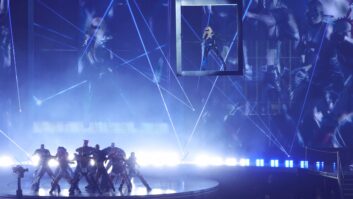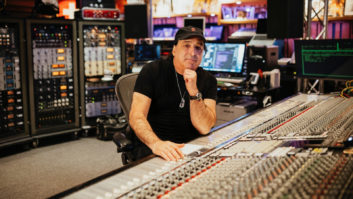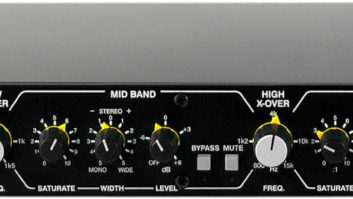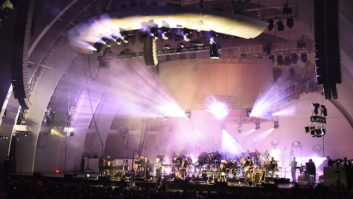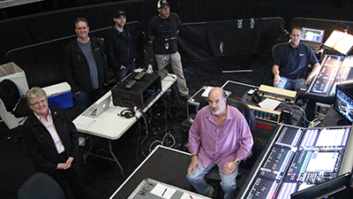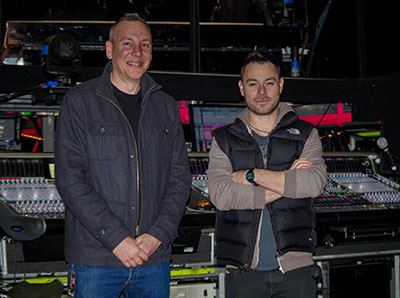
Madonna began the third leg of her highly successful globetrotting Rebel Heart Tour in Mexico City on January 6 with a scheduled conclusion on March 20 in Sydney, Australia. Alongside Madonna, stage personnel comprise four musicians, two backing vocalists and 20 dancers. The Rebel Heart Tour has been traveling with a pair of DiGiCo SD7 consoles operated by front-of-house engineer Andy Meyer and monitor engineers Matt Napier and Sean Spuehler. Meyer and Napier are both using SD7s with Napier’s console featuring an EX007 fader expansion.
“Madonna likes her live sound to be as close as possible to the album,” says Napier. “To accomplish this, Sean focuses on mixing her vocal effects and delays, which are then bused to the FOH console so—in theory, at least—the audience hears exactly the same vocal sound that she does. She spends a large proportion of the show 110 feet in front of the P.A. As she gets further into the P.A., the sound of the spill through her vocal mic means what she needs to hear in terms of pitch and timing constantly changes. It’s the first time I’ve run a show using timecode, which I’ve done partly to mitigate this. Having multiple snapshots per song, all fired automatically via timecode, has freed me to concentrate on the aspects of the mix that I need to adjust in compensating for the effect of her moving along the catwalk. The timecode has also been really useful when we have the occasional—inevitable—problem, because it allows me to focus on that and not worry so much about missing a cue.”
All of the musicians are on in-ear monitors, with additional monitoring for musical director/keyboardist Kevin Antunes, a thumper for drummer Brian Frasier-Moore and sidefills for the dancers. Spuehler’s vocal group is bused into Napier’s side of the SD7, where he adds it to the music mix in her monitors, as well as looking after the other musicians. In all, the SD7 monitor console is set up with 118 input channels, 19 mono auxiliaries, 22 stereo auxiliaries, six stereo groups, four mono groups, 10 matrix outputs and 12 control groups.
“We have kept the console running at 48 kHz, mainly because we interface via MADI with the playback computers and all the show sessions are at that sample rate,” says Antunes. “In addition to the playback, we also send record lines back to playback world. This means that in rehearsals the musicians can add any overdubs, or additional parts, quickly and easily. A second MADI interface system connects via RME MADI Bridges to two Mac Pros running Apple Logic. This allows us to interface third-party plug-ins directly with the console.”
